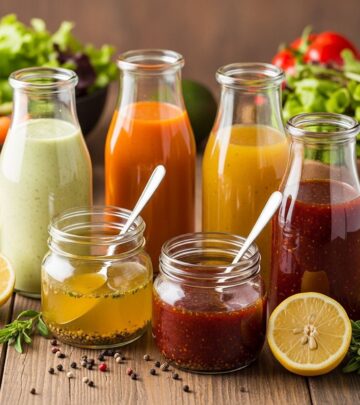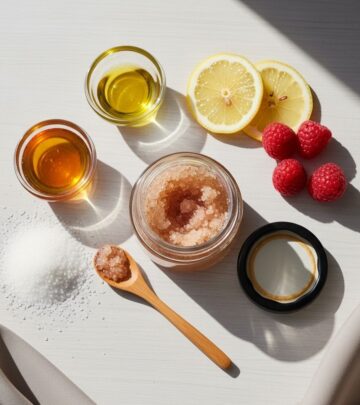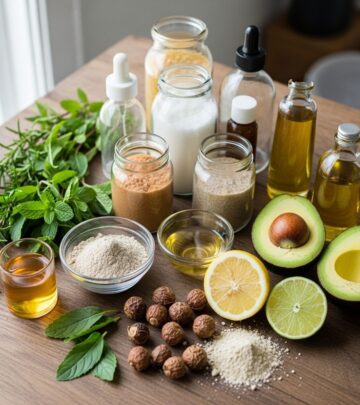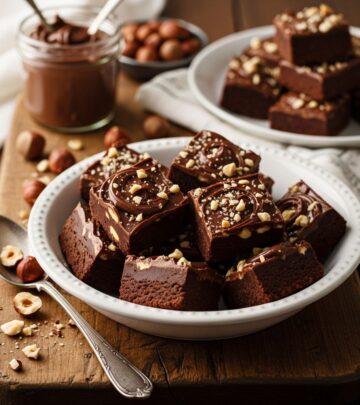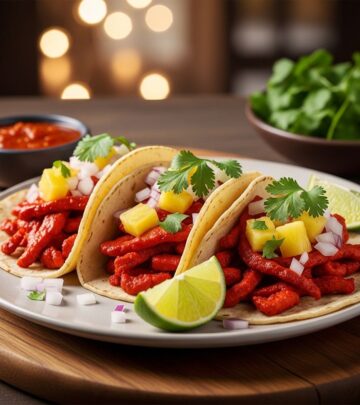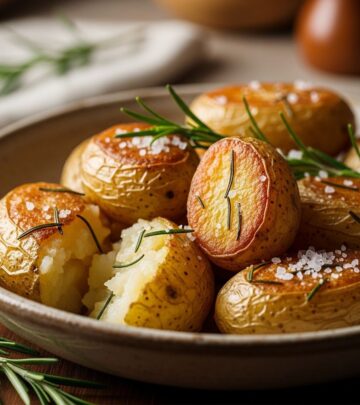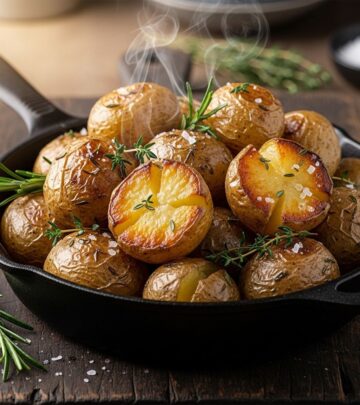Fruit Smoothie Recipe: 7 Delicious Variations And Expert Tips
Whip up vibrant, refreshing blends in minutes with simple tips for nutritious treats!
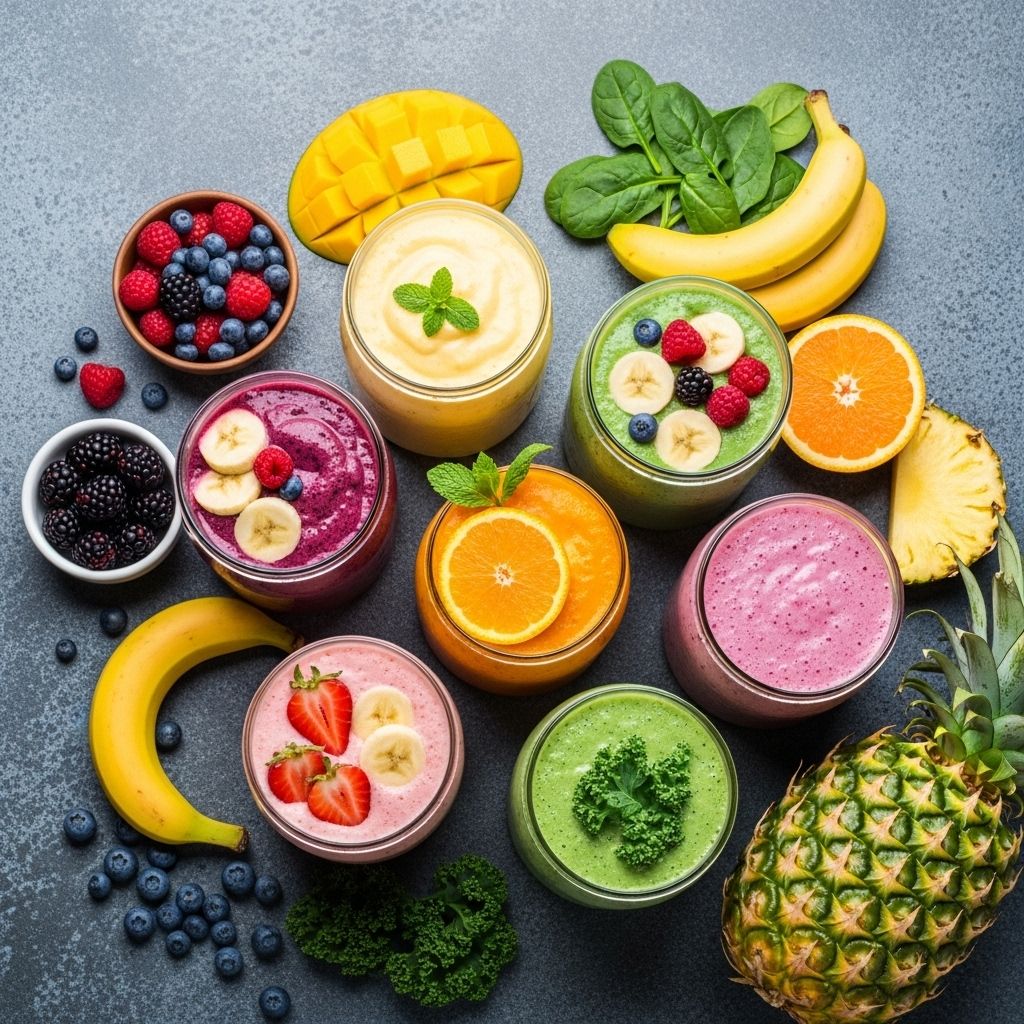
Image: HearthJunction Design Team
Basic Fruit Smoothie: The Ultimate Guide to Quick and Delicious Homemade Smoothies
Fruit smoothies have become a morning staple for countless households, loved for their vibrant taste, energizing qualities, and endless customizability. If you’re looking for a simple, reliable recipe to launch your smoothie journey or refine your breakfast routine, this guide walks you through every step of creating a classic fruit smoothie, spotlighting strawberries, banana, peaches, and refreshing juice. Along the way, discover expert tips, creative variations, nutrition highlights, and answers to your most common questions.
Table of Contents
- Introduction: Why Fruit Smoothies?
- Ingredients for a Basic Fruit Smoothie
- Step-by-Step Instructions: How to Make the Perfect Smoothie
- Expert Tips for Smoothie Success
- Delicious Variations and Add-Ins
- Nutritional Information
- Serving Suggestions
- How to Store and Prep Ahead
- Frequently Asked Questions (FAQs)
Introduction: Why Fruit Smoothies?
Fruit smoothies offer a fast, convenient, and truly delicious way to enjoy more fruit in your daily diet. With nothing more than a blender and a few staple ingredients, you can whip up a vibrant, frosty beverage that not only satisfies your taste buds but also packs a punch of natural vitamins and fiber. Whether for breakfast, a midday snack, or a post-workout treat, a basic fruit smoothie is adaptable to nearly any preference or dietary need.
Ingredients for a Basic Fruit Smoothie
This foundational fruit smoothie recipe celebrates the flavor and texture of fresh and frozen fruit, made creamy with banana and sweetened naturally with juice. Here’s what you’ll need:
- Strawberries: 1 quart, hulled and halved if large. Fresh or frozen.
- Banana: 1, peeled and sliced into chunks.
- Peaches: 2 medium, pitted and sliced (or use 2 cups frozen peach slices if out of season).
- Fruit Juice: 1 cup. Multipurpose blends like orange-peach-mango work best for flavor, but you can substitute with any fruit juice on hand.
- Ice: 2 cups, if you used all fresh fruit. If using frozen fruit, you may reduce or skip ice.
| Ingredient | Amount | Notes |
|---|---|---|
| Strawberries | 1 quart | Fresh or frozen, hulled |
| Banana | 1 medium | Chunked |
| Peaches | 2 medium (or 2 cups frozen) | Pitted and sliced |
| Fruit Juice | 1 cup | Orange-peach-mango recommended |
| Ice | 2 cups | Only if needed for texture |
Step-by-Step Instructions: How to Make the Perfect Smoothie
- Prepare the fruit. Ensure all fruit is washed, pitted, and cut into manageable pieces. If using frozen fruit, no extra preparation is needed.
- Load the blender. Add the strawberries, banana, and peaches to the blender jar, followed by the fruit juice.
- Blend until smooth. Secure the lid and blend on high until the mixture is completely smooth and uniform. This usually takes 30–60 seconds, depending on your blender’s power.
- If needed, add ice. If the smoothie is too thin, add the ice and blend again until the ice is crushed and the mixture thickens to your liking. If using frozen fruit, you may not need extra ice.
- Taste and adjust. Sample a spoonful. For extra sweetness, add a splash more juice or a drizzle of honey. For thicker texture, add more ice or frozen fruit and blend again.
- Serve immediately. Pour the smoothie into glasses and enjoy right away!
Expert Tips for Smoothie Success
- Layering Order: Place liquids closest to the blender blades, followed by softer fruit and then harder or frozen items. This helps the blender run smoothly and prevents air pockets.
- Juice Selection: Orange, peach, mango, or pineapple juices all work beautifully. Avoid adding too much juice if you prefer a thicker, spoonable smoothie.
- Frozen vs Fresh: Use a mix of fresh and frozen fruit for the best texture. Frozen fruit chills and thickens the smoothie without needing to add much ice, which can dilute flavors.
- Blender Tips: High-powered blenders produce the smoothest results, but any standard blender works with adequately chopped ingredients and some patience.
- Sweetener Caution: Most smoothies are sweet enough naturally, especially with ripe bananas and juice. Only add honey or syrup if your fruit is tart or out of season.
Delicious Variations and Add-Ins
This basic recipe is a template—feel free to swap ingredients or incorporate your favorite flavors. Here are popular mix-ins and modifications:
- Berry Blend: Replace peaches with blueberries, raspberries, or blackberries for an antioxidant boost and vivid color.
- Tropical Twist: Use pineapple, mango, or papaya in place of peaches, and opt for coconut water or pineapple juice as your liquid.
- Green Smoothie: Add a handful of baby spinach or kale for extra nutrients. Mild greens blend in well and are nearly tasteless when paired with sweet fruit.
- Protein Power: Add a scoop of Greek yogurt, protein powder, or silken tofu for a creamier, more filling smoothie.
- Nutty Boost: Blend in a tablespoon of almond butter, peanut butter, chia seeds, or flaxseed for healthy fats and extra protein.
- Creamier Texture: Add a splash of milk (dairy or plant-based), coconut milk, or even a dollop of vanilla yogurt.
- Spice It Up: A pinch of cinnamon, nutmeg, or ginger can add warmth and complexity, particularly with peaches or bananas.
Nutritional Information
A basic fruit smoothie packs naturally occurring vitamins, minerals, and fiber with minimal fat and no added refined sugars. Here’s a general nutritional snapshot for a two-serving batch of this recipe (values are approximate and vary by ingredients):
- Calories: 150–220 per serving
- Carbohydrates: 38–50 grams
- Fiber: 4–8 grams, depending on fruit mix
- Protein: 2–4 grams
- Vitamin C: 80–150% of daily value
- Potassium: High, thanks to bananas and peaches
Note: For reduced sugar, use water or unsweetened almond milk in place of fruit juice, or emphasize lower-sugar fruits such as berries.
Serving Suggestions
- Pour smoothies into tall glasses and garnish with fresh fruit slices or a mint sprig for a restaurant-worthy presentation.
- For children, use colorful straws and serve in smaller portions as a snack.
- Turn the smoothie into a “bowl” by making it extra thick and topping with granola, sliced fruit, coconut flakes, and seeds for a trendy, Instagram-friendly breakfast.
How to Store and Prep Ahead
- Short-Term: Smoothies are best enjoyed immediately, but you may store leftovers in a sealed container in the refrigerator for up to 24 hours. Shake or stir before drinking, as separation is natural.
- Meal Prepping: Combine prepped and sliced fruit in freezer-safe bags for individual smoothie “packs.” When ready to blend, dump a pack into the blender with juice or milk and blend until smooth.
- Freezing: You can freeze smoothie leftovers in popsicle molds for a healthy frozen treat.
Frequently Asked Questions (FAQs)
Can I use other fruits in this smoothie?
Absolutely! This recipe is endlessly adaptable. Swap or combine your favorite fruits like pineapple, mango, blueberries, or cherries, depending on what’s in season or in your freezer.
Is a fruit smoothie healthy?
Yes, when made with whole fruits and without added sugars, smoothies are a great source of vitamins, fiber, and hydration. Choose juice carefully or dilute with water to reduce sugar content.
What’s the best liquid for smoothies?
Juice is classic for a sweeter smoothie, but water, coconut water, or unsweetened plant milks also work and can make the drink more refreshing or lower in calories.
Should I use fresh or frozen fruit?
Either works, but frozen fruit helps thicken the smoothie and chills it instantly, reducing the need for added ice (which can water down the flavor). Mixing both is ideal for texture and taste.
How can I make my smoothie thicker?
Use more frozen fruit, less liquid, or add ingredients like yogurt, avocado, or oats. Start with less liquid and add gradually until you reach the desired consistency.
Can I add vegetables?
Definitely. Leafy greens like spinach or kale are popular, but you can also try cooked and cooled carrots, cauliflower, or beets for added nutrients and color. Their flavors blend well and are often hidden by sweet fruit.
What if I want to add more protein?
Blend in Greek yogurt, silken tofu, nut butters, or protein powder. These options boost the smoothie’s nutrition and help keep you full longer.
How can I make my smoothie sweeter without sugar?
Use very ripe bananas or include naturally sweet fruits like mango or pineapple. If needed, add a teaspoon of honey, agave, or maple syrup, tasting as you go.
Conclusion: Your Perfect Smoothie Awaits
Making a delicious, nutritious fruit smoothie at home is quick, easy, and endlessly customizable. Start with the basic combination of strawberries, banana, peaches, and juice, then experiment confidently with new fruits, greens, and add-ins. In just minutes, you’ll be enjoying a homemade drink that’s as wholesome as it is tasty—no fancy equipment or skills required. Cheers to better breakfasts and healthy snacking!
References
Read full bio of Shinta

